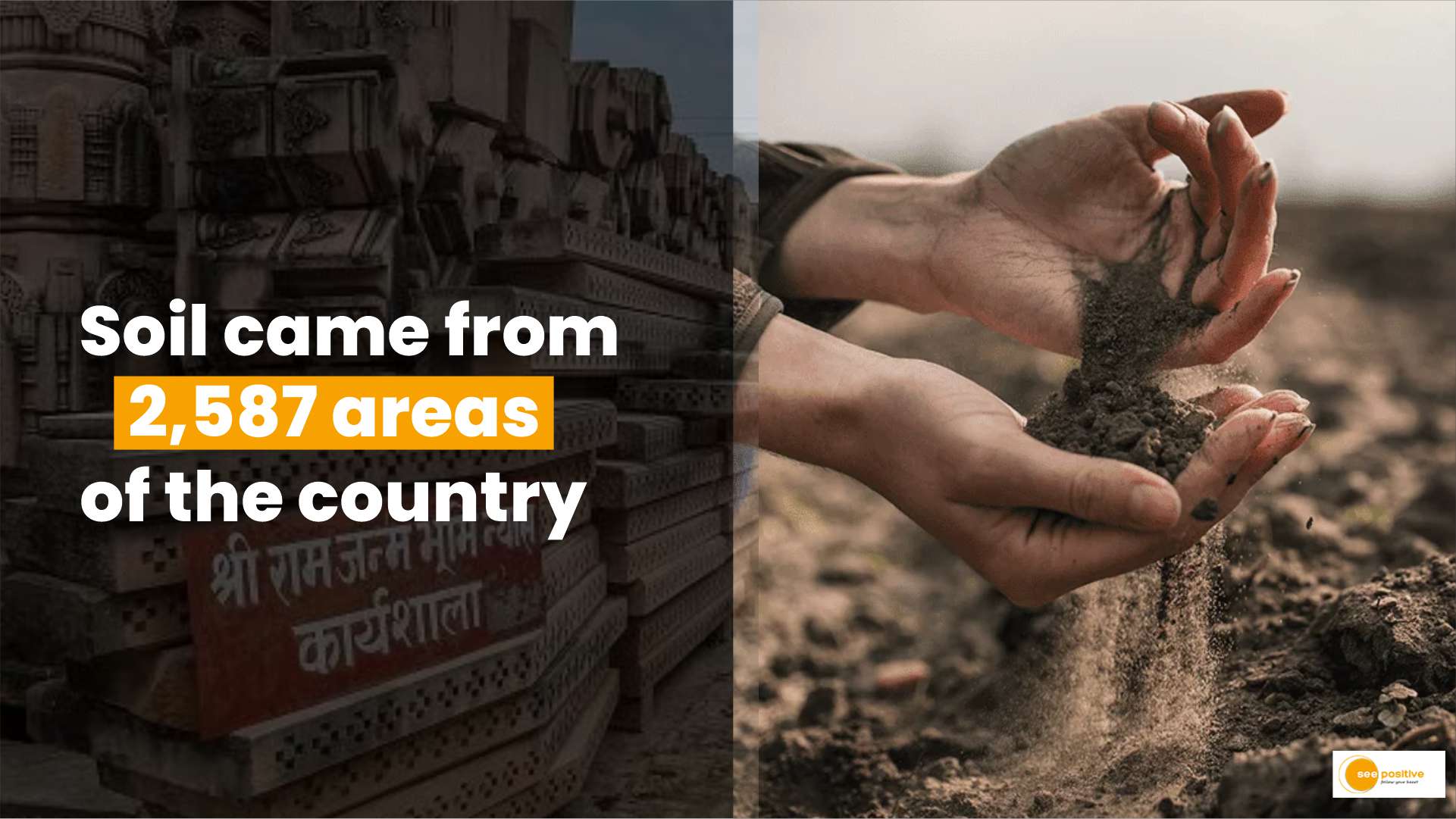The foundation of the Ayodhya Ram Mandir is more than just construction material; it’s a blend of sacred soil from 2587 regions across India. Let’s explore the spiritual significance behind this unique choice.
A Spiritual Pilgrimage through Soil
Jhansi: The soil of Jhansi, a place steeped in legends of heroism and tenacity, gives the temple with the determined spirit of its people. This region’s historical significance, particularly during the Indian Rebellion of 1857, lends durability and strength to the temple’s structure.
Bithoori: Bithoori, the birthplace of Saint Valmiki, the legendary sage who penned the Ramayana, supplies soil to represent the epic’s foundations. This soil connects the temple directly to the source of the old narrative, as well as the spiritual soul of the Ram Mandir.
Yamunotri: The temple accepts soil from the hallowed beginnings of the Yamuna River, which conveys Yamunotri’s pristine spirit. The use of this soil represents the spiritual journey from the source, stressing purity and divinity in the foundation.
Haldighati: The soll from Haldighati, a battleground famous for the epic Battle of Haldighati, tells stories of bravery and selflessness. Its inclusion in the foundation pays honor to the heroes who fought for their values, connecting the temple to historical events.
Chittorgarh: The soll from the famous Chittorgarh fort, an exemplar of Rajputana architecture, provides cultural depth to the temple’s foundation. It represents the lasting spirit of a bygone period, creating a link between the temple and the grandeur of Chittorgarh.
Shivaji Fort: Incorporating soll from the mighty Shivaji Fort honors the memory of Chhatrapati Shivaji Maharaj and the Maratha Empire. This inclusion imbues the foundation with the spirit of Maharashtra’s warrior ruler, resulting in a distinct blend of cultures within the temple.
Golden Temple: The Golden Temple, a symbol of Sikhism’s spiritual majesty, contributes to the temple’s foundation by representing unity and harmony among many faiths. The dirt from this sacred spot underscores the Ram Mandir’s inclusive nature, which transcends religious bounds.
Varanasi: Varanasi is known as India’s spiritual capital, and its soil imbues the temple with ancient wisdom and mystique. It pays tribute to the region’s rich cultural tapestry, connecting the temple to Varanasi’s spiritual vibrancy.
Completion and Ceremonial Gifts
As the temple nears completion, it is securely rooted in the sanctity of the land, echoing the stories of generations before. The soil of Ram Janmabhoomi, which was taken up during the foundation digging for the great temple in Ayodhya, will be put in boxes and delivered to the visitors who will attend the consecration ceremony on January 22. Janmabhoomi Theerth Kshetra Trust claimed that who will attend the historic ceremony, will be given with a 15-meter picture of the Ram Mandir in the holy city packaged in a jute bag, which will also hold the temple photos.
Arrangements are being made to present memorable gifts to over 11,000 guests and invitees to the consecration ceremony.
What else to be presented?
Aside from the soil of Ram Janmabhoomi, the guests will be served 100 grams of special Motichoor laddoos cooked with desi ghee as prasad and a sacred tulsi leaf. The gift boxes will also include water from the Saryu river in a bottle and religious texts from Gorakhpur’s Gita Press.
Positive Takeaway
The Ayodhya Ram Mandir’s foundation is a symbol of India’s unity, blending sacred soil from 2587 regions. Each contributes history, valor, and cultural richness. Presenting this soil during the ceremony, along with symbolic gifts, reflects shared history and spiritual unity. As the temple nears completion, it stands as a testament to India’s diverse yet united heritage.


